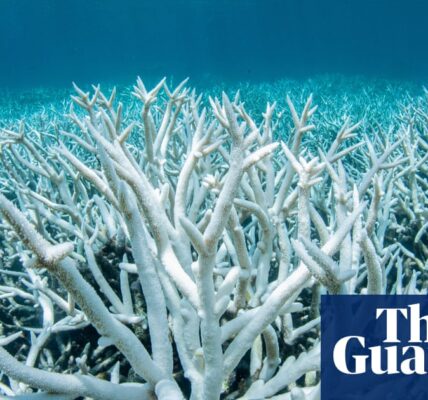
A giant 280m-year-old salamander-like creature that was an apex predator before the age of the dinosaurs has been discovered by fossil hunters in Namibia.
The creature, Gaiasia jennyae, was about 2.5 metres long, had an enormous toilet seat-shaped head and fearsome interlocking fangs. It lurked in cold swampy waters and lakes with its mouth wide open, preparing to clamp down its powerful jaws on any prey unwise enough to swim past.
“When we found this enormous specimen just lying on the outcrop as a giant concretion, it was really shocking,” said Prof Claudia Marsicano of the University of Buenos Aires, who unearthed the fossil with colleagues. “I knew just from seeing it that it was something completely different. We were all very excited.”
Gaiasia would have been the top predator of its ecosystem and among the largest land predators of the time period.
“It’s got a big, flat, toilet seat-shaped head, which allows it to open its mouth and suck in prey. It has these huge fangs, the whole front of the mouth is just giant teeth,” said Jason Pardo, of the Field Museum in Chicago and the co-lead author of a paper, describing the fossils. “It’s a big predator, but potentially also a relatively slow ambush predator.”
The fossil is named after the Gai-As Formation in Namibia where it was found, and for Jenny Clack, a palaeontologist who specialised in the evolution of early tetrapods, four-limbed vertebrates that gave rise to amphibians, reptiles, birds and mammals.
At least four incomplete fossil specimens were discovered, including skull fragments and an almost complete backbone. Gaiasia’s skull was about 60cm in length and its jaw structure indicates that it had a powerful bite capable of capturing large prey.
“After examining the skull, the structure of the front of the skull caught my attention,” said Marsicano. “It was the only clearly visible part at that time, and it showed very unusually interlocking large fangs, creating a unique bite for early tetrapods.”
The location of the discovery is significant because until now most insights into the early evolution of land animals came from fossils discovered at ancient equatorial wetlands in what is now Europe and North America. At the time the creature lived, modern-day Namibia would have been positioned much further south, almost level with the northernmost point of Antarctica, and part of the great southern supercontinent Gondwana. While the land near the equator was drying out and becoming forested, closer to the poles the swamps remained, potentially alongside patches of ice and glaciers.
The latest discovery shows that despite the unforgiving climate, large predators were thriving in these frosty swamps. The fossils bear greater similarity to more ancient vertebrates, while in warmer, drier parts of the world, animals appear to have been branching out into new forms to one day become mammals, reptiles and amphibians.
“It tells us that what was happening in the far south was very different from what was happening at the equator,” said Pardo. “And that’s really important because there were a lot of groups of animals that appeared at this time that we don’t really know where they came from. The more we look, we might find more answers about these major animal groups that we care about, like the ancestors of mammals and modern reptiles.”
Source: theguardian.com


